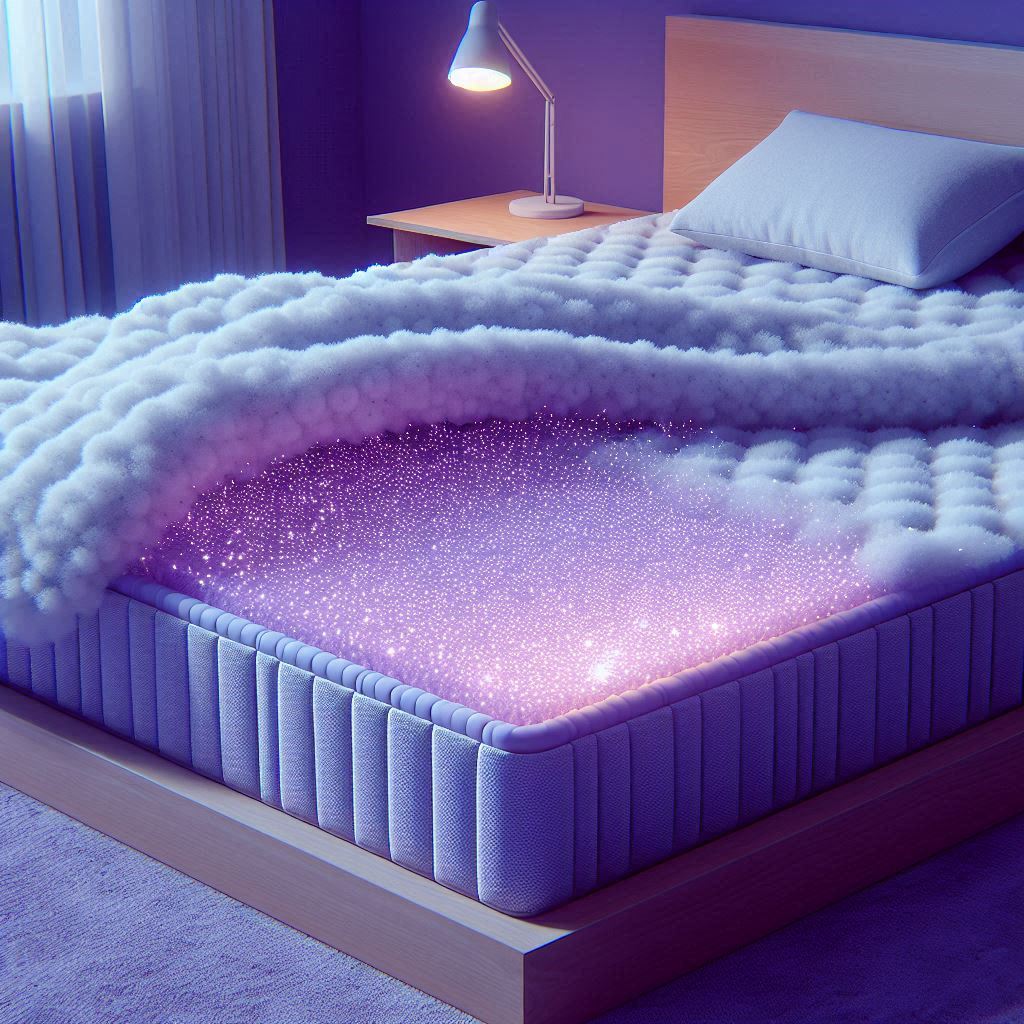Many consumers prioritize comfort, support, and durability when shopping for a new mattress. However, concerns about mattress materials and construction, such as the presence of fiberglass, can also factor into purchasing decisions. In recent years, questions have arisen regarding whether fiberglass is used in Purple mattresses, a famous brand known for its innovative materials and unique comfort technology. In this article, we’ll explore the composition of Purple mattresses, address concerns about fiberglass, and provide insights into the materials used in their construction.
Understanding Purple Mattresses
Purple mattresses are manufactured by Purple Innovation, LLC, a company founded in 2015 and headquartered in Utah, United States. Purple mattresses are renowned for their patented Hyper-Elastic Polymer grid, which offers a unique combination of pressure relief, support, and temperature regulation. The grid is designed to flex under pressure while providing responsive support to accommodate various sleep positions and body types.
Addressing Concerns about Fiberglass
Fiberglass is a synthetic material made from fine glass fibers. It is commonly used in various industries for its durability and insulation properties. In mattresses, fiberglass is sometimes used as a fire retardant in mattress covers to enhance safety and comply with flammability standards set by regulatory agencies such as the Consumer Product Safety Commission (CPSC).
While some mattresses may contain fiberglass as a fire barrier within the cover, there is no evidence to suggest that fiberglass is used in Purple mattresses. Purple Innovation, LLC, has not disclosed the use of fiberglass in its mattresses, and the company’s emphasis on product safety and quality control suggests that it prioritizes using safe and non-toxic materials in its products.
Materials Used in Purple Mattresses
Purple mattresses are constructed using a combination of materials, including:
Hyper-Elastic Polymer: The Purple Grid, made from Hyper-Elastic Polymer, forms the top layer of Purple mattresses. This proprietary material provides pressure relief, support, and airflow to promote a comfortable sleep experience.
Comfort Foam Layers: Beneath the Purple Grid, Purple mattresses typically contain layers of high-density foam to provide additional cushioning and support.
Cover Fabric: The mattress cover, made from polyester, viscose, and Lycra® spandex blend, is breathable, stretchy, and designed to enhance airflow and moisture-wicking properties.
Pros and Cons
Pros
Fire Safety: Fiberglass can serve as a fire barrier in mattress covers, enhancing safety by reducing the risk of mattress fires and complying with flammability standards set by regulatory agencies.
Durability: Fiberglass is known for its durability and resistance to heat, making it an effective material for withstanding high temperatures and preventing flames from spreading.
Cost-Effectiveness: Fiberglass’s relative inexpensiveness compared to alternative fire retardants helps manufacturers keep production costs down and potentially reduce the retail price of mattresses.
Regulatory Compliance: Mattresses containing fiberglass as a fire barrier may meet regulatory requirements for flammability standards, assuring consumers regarding product safety and compliance with industry regulations.
Cons
Health Concerns: Fiberglass particles can escape from the mattress cover, posing health risks such as skin irritation, respiratory issues, and eye irritation if inhaled or come into contact with the skin.
Cleanup Challenges: Once fiberglass particles release into the environment, cleaning them up can be difficult, often necessitating professional services for removal from surfaces like carpets, upholstery, and clothing.
Potential for Allergic Reactions: Individuals with sensitivities or allergies to fiberglass may experience adverse reactions when exposed to fiberglass particles, including itching, redness, and discomfort.
Environmental Impact: Fiberglass is not biodegradable and can contribute to environmental pollution if disposed of improperly. Improper handling and disposal of mattresses containing fiberglass can lead to contamination of soil and water sources.

Frequently Asked Questions (FAQs)
Q1: Does the Purple mattress contain fiberglass?
A: No, Purple mattresses do not contain fiberglass. The company has not disclosed the use of fiberglass in its mattresses. It is emphasis on safety and quality control suggests that it prioritizes using safe and non-toxic materials.
Q2: Why is fiberglass a concern in mattresses?
A: Manufacturers sometimes use fiberglass in mattress covers as a fire barrier to enhance safety and meet flammability standards. However, concerns arise when fiberglass particles escape the cover, potentially causing skin irritation and respiratory issues.
Q3: What materials are used in Purple mattresses?
A: Purple constructs mattresses using a combination of materials. It has the proprietary Hyper-Elastic Polymer grid, comfort foam layers, and a cover fabric.
Q4: How does Purple ensure mattress safety and quality?
A: Purple Innovation, LLC prioritizes product safety, quality, and transparency. The company conducts rigorous testing and adheres to industry standards to ensure its mattresses meet safety.
Q5: Are there any potential health risks associated with Purple mattresses?
A: Purple mattresses prioritize customer safety with materials that pose no known health risks in their construction. The company emphasizes using non-toxic and hypoallergenic materials to create a healthy sleep environment.
Q6: Can I find information about mattress materials on the Purple website?
A: Yes, Purple’s website provides detailed information about mattress materials and construction. To make informed purchasing decisions, customers can review product specifications, including material composition and safety certifications.
Q7: How can I verify the materials used in a Purple mattress?
A: Customers can contact Purple support or authorized retailers for information on mattress materials.
Q8: Are there alternative options for fiberglass-free mattresses?
A: Yes, many mattress brands offer fiberglass-free options. Customers can choose mattresses made from natural or organic materials like latex, cotton, or wool for a chemical-free sleep experience.
Conclusion
While consumer concerns about mattress materials, including fiberglass, are valid, Purple mattresses do not contain fiberglass. Purple Innovation, LLC prioritizes product safety, quality, and transparency in constructing mattresses with innovative materials for comfort and support. Before purchasing, consumers should research mattress brands, review specifications, and consult manufacturers or retailers regarding composition and safety concerns.